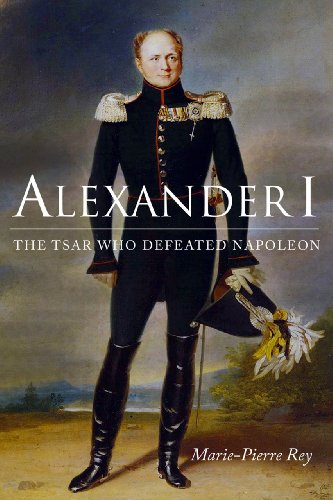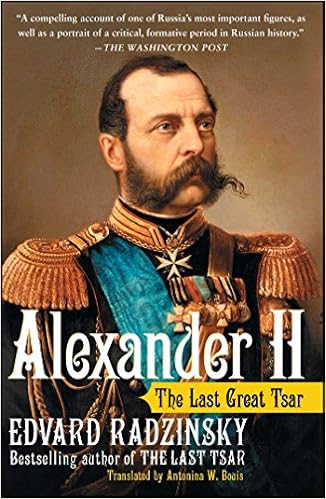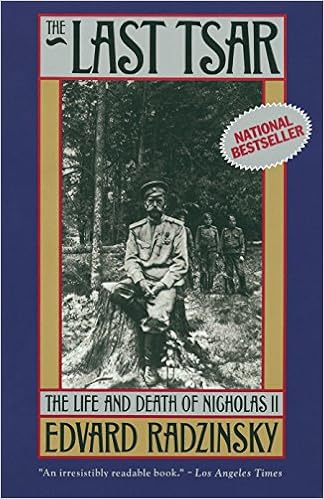We began the Russian History series with the founder of the Romanov dynasty, Michael I, whose rule began in 1613, then moved quickly to the dynasty’s most significant early tsar and first emperor: Peter I, or Peter the Great (1682–1725). Our real interest lies, of course, with the Russian rulers from a later time, a time that began with Catherine II’s rule in 1762. Therefore, beginning with this post and continuing through the rest of the Romanov dynasty, we will use a timeline that reflects our main focus.
As far as the Romanov dynasty is concerned, we can limit our primary investigation to a mere seven tsars. We have already covered the first two: Catherine II and Paul I. This post begins our survey of the next tsar: Alexander I, who reigned from 1801 to until his death in 1825.
Before we turn our attention to Alexander’s life, it is worthwhile to recall his importance to our family. In short, Alexander I was tsar when our direct ancestors first settled in Russia. He was tsar in 1817, when Benjamin Buller, father of David (father of Peter D, father of Peter P, father of Grandpa Chris), settled in a Volynian village named Zofyovka; Alexander was also tsar in 1819, when Benjamin’s father, also named Benjamin, and other members of the Przechovka Mennonite community emigrated to Molotschna and there founded the village Alexanderwohl, named, of course, after the tsar and emperor of all Russia. In short, although Catherine II was the first Russian ruler to welcome Mennonites to Russia and her son Paul I formally decreed all the privileges that they were to receive, Alexander I was responsible for welcoming our family into the kingdom and thus played a significant role in our family history.
Who, then, was Alexander I? Alexander Pavlovich Romanov (note the custom of using the father’s first name as the son’s middle name) was born on 23 December 1777 and thus was twenty-three years old when his father was deposed and then assassinated in one fell swoop. He died slightly less than twenty-four years later, on 1 December 1825.
Alexander is most remembered as the tsar who defeated Napoleon, which is the subtitle of Marie-Pierre Rey’s engaging and authoritative 2012 biography of him. We need not detail those events here, but it is good to recount a few high points.
The Napoleonic wars extended from 1803 until 1815 and involved at least seven different coalitions formed against Napoleon and his powerful army. In 1812, Russian refusal to abide by the trade restrictions that Napoleon had imposed prompted him to invade Russia. Napoleon entered Russian territory in June with 450,000 troops. The Russian army engaged in a strategic retreat, leaving scorched earth behind them as they withdrew further into the Russian interior. Moscow was burned, and still Alexander and his forces retreated. Eventually Napoleon’s supply line failed and his troops began deserting in growing numbers. With the onset of winter in late October, Napoleon was forced to withdraw. By the time he left Russia in November, starvation, desertion, and Russian attacks had devastated his Grand Armée, which now numbered only 27,000 men.
Remarkably, Napoleon was not finished and soon rebuilt his army. Seizing the moment, Alexander formed an alliance with Prussia and then Austria, then stubbornly pushed this Seventh Coalition to pursue Napoleon deep into France until Napoleon surrendered on 11 April 1814. All of Europe hailed Alexander for his role in defeating Napoleon (although Napoleon would launch one final assault in 1815).
Alexander’s war with Napoleon probably had little direct effect on our family, since it appears that there were no conflicts near the Przechovka area, nor did the French or Russian armies pass directly through that locale. Nevertheless, Alexander’s defeat of Napoleon did have a profound effect on our family history. Precisely how Alexander shaped our family story will be taken up in the following post.
Work Cited
Rey, Marie-Pierre. 2012. Alexander I: The Tsar Who Defeated Napoleon. Dekalb: Northern Illinois University Press.
Before we turn our attention to Alexander’s life, it is worthwhile to recall his importance to our family. In short, Alexander I was tsar when our direct ancestors first settled in Russia. He was tsar in 1817, when Benjamin Buller, father of David (father of Peter D, father of Peter P, father of Grandpa Chris), settled in a Volynian village named Zofyovka; Alexander was also tsar in 1819, when Benjamin’s father, also named Benjamin, and other members of the Przechovka Mennonite community emigrated to Molotschna and there founded the village Alexanderwohl, named, of course, after the tsar and emperor of all Russia. In short, although Catherine II was the first Russian ruler to welcome Mennonites to Russia and her son Paul I formally decreed all the privileges that they were to receive, Alexander I was responsible for welcoming our family into the kingdom and thus played a significant role in our family history.
Who, then, was Alexander I? Alexander Pavlovich Romanov (note the custom of using the father’s first name as the son’s middle name) was born on 23 December 1777 and thus was twenty-three years old when his father was deposed and then assassinated in one fell swoop. He died slightly less than twenty-four years later, on 1 December 1825.
Alexander is most remembered as the tsar who defeated Napoleon, which is the subtitle of Marie-Pierre Rey’s engaging and authoritative 2012 biography of him. We need not detail those events here, but it is good to recount a few high points.
The Napoleonic wars extended from 1803 until 1815 and involved at least seven different coalitions formed against Napoleon and his powerful army. In 1812, Russian refusal to abide by the trade restrictions that Napoleon had imposed prompted him to invade Russia. Napoleon entered Russian territory in June with 450,000 troops. The Russian army engaged in a strategic retreat, leaving scorched earth behind them as they withdrew further into the Russian interior. Moscow was burned, and still Alexander and his forces retreated. Eventually Napoleon’s supply line failed and his troops began deserting in growing numbers. With the onset of winter in late October, Napoleon was forced to withdraw. By the time he left Russia in November, starvation, desertion, and Russian attacks had devastated his Grand Armée, which now numbered only 27,000 men.
Remarkably, Napoleon was not finished and soon rebuilt his army. Seizing the moment, Alexander formed an alliance with Prussia and then Austria, then stubbornly pushed this Seventh Coalition to pursue Napoleon deep into France until Napoleon surrendered on 11 April 1814. All of Europe hailed Alexander for his role in defeating Napoleon (although Napoleon would launch one final assault in 1815).
Alexander’s war with Napoleon probably had little direct effect on our family, since it appears that there were no conflicts near the Przechovka area, nor did the French or Russian armies pass directly through that locale. Nevertheless, Alexander’s defeat of Napoleon did have a profound effect on our family history. Precisely how Alexander shaped our family story will be taken up in the following post.
Work Cited
Rey, Marie-Pierre. 2012. Alexander I: The Tsar Who Defeated Napoleon. Dekalb: Northern Illinois University Press.








